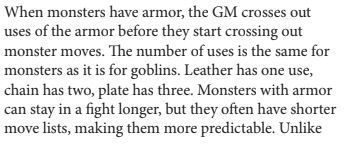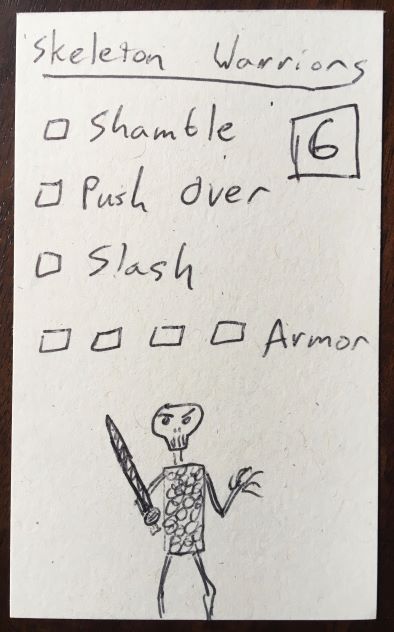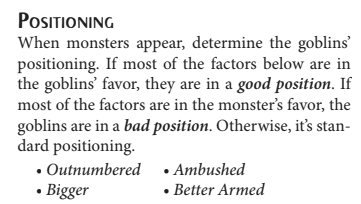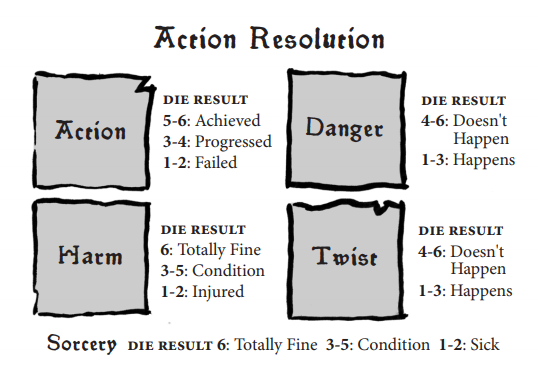So I have a few questions about monsters as I'm trying to figure out this new system.
The number of monsters that appear is only used to determine if the monsters outnumber the goblins or do I as the GM have to cross off moves for each of the monsters as each of them take hits? With 10 clerics, each with 3 moves am I only marking off 3 moves or 30? If only 3 does this change if you have different types of monsters? 3 clerics, 3 skeletons, 3 zombies, and a necromancer. Each with 3 moves, would that be 14 moves to cross off total or still only 3 moves? Or am I completely playing a different game here?
What happens if the players decide to not do anything with a monster? It seems like they are only in danger when they take an action, so if they don't take an action are they not in danger? How do I get a monster to swing a sword at a goblin? If the player decides to do nothing when being attacked, what happens? When do monsters attack in the initiative order?
An example of combat would be nice.
When changing positions, say you are in good position, but something happens that would normally start you in a bad position, do you change directly to the bad position or do you move to standard position first?
What if a monster attacks a goblin that has already taken their action die off the initiative because that's how the fiction calls for it?
How many twist can be added to a roll or is there even a limit?
Thanks










